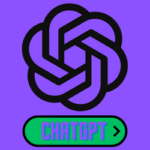How Does ChatGPT Technology Ensure Ethical Practices?
As artificial intelligence (AI) technology continues to advance, ensuring ethical practices has become a critical concern. One of the most recent advancements in AI is ChatGPT, an AI language model developed by OpenAI. While the use of ChatGPT technology has raised ethical concerns, it is also designed with built-in features to ensure ethical practices. In this article, we will explore how ChatGPT technology ensures ethical practices.

1. Introduction to ChatGPT Technology
ChatGPT is an AI language model that is designed to facilitate communication between humans and machines. It is capable of understanding and generating human-like text, making it useful for a variety of applications, including customer service, language translation, and content creation.
2. Ensuring Ethical Practices
The development of ChatGPT technology has raised a number of ethical concerns. Some of the most pressing issues include bias and fairness, privacy and security, manipulation and deception, lack of accountability and transparency, and unintended consequences. To address these concerns, ChatGPT has been designed with a number of features to ensure ethical practices.
2.1 Bias Mitigation
One of the primary ethical concerns with AI technology is the risk of perpetuating biases that exist in society. ChatGPT has been designed with a number of features to mitigate this risk. For example, the language used to train the model is carefully chosen to avoid biased language, and the model is regularly tested for biases and adjusted as needed.
2.2 Privacy and Security
ChatGPT technology relies on personal information and data to generate responses, which raises concerns about data privacy and security. To address these concerns, ChatGPT has been designed with a number of features to protect user privacy and data security. For example, all user data is encrypted and stored securely, and access to this data is strictly controlled.
2.3 Transparency and Accountability
One of the challenges with AI technology is that it can be difficult to understand how the system works and to identify who is responsible for its actions. To ensure transparency and accountability, ChatGPT has been designed with a number of features to make its workings more transparent. For example, the model’s code is open-source, which means that anyone can review and modify it, and the model’s outputs are clearly labeled as machine-generated.
2.4 Human Oversight
Another important feature of ChatGPT technology is human oversight. While the model is capable of generating responses on its own, it is also monitored by human moderators to ensure that its responses are appropriate and ethical. This human oversight helps to ensure that the model is not used to manipulate or deceive users and that it remains accountable and transparent.
2.5 User Education
Finally, ChatGPT technology is designed to educate users about its limitations and capabilities. This helps to ensure that users are not misled by the model’s responses and that they understand the ethical implications of using the technology. By educating users, ChatGPT can help to ensure that the technology is used ethically and responsibly.
3. Conclusion
In conclusion, ChatGPT technology has been designed with a number of features to ensure ethical practices. These features include bias mitigation, privacy and security, transparency and accountability, human oversight, and user education. As AI technology continues to advance, it is critical that we continue to prioritize ethical practices and work to ensure that these technologies are used responsibly.



